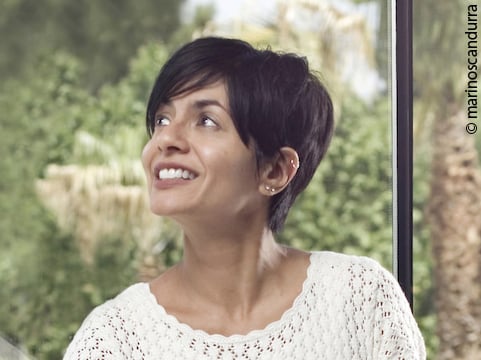
October 17, 2012
Women in Green: Simran Sethi
I’ve written about Simran Sethi here before. She’s an inspiring, energetic green diva—a strategist, educator, and journalist. She’s had a worldwide career, yet somehow she landed in Lawrence, my hometown in Kansas, and taught for some time at the University of Kansas School of Journalism (my alma mater). Sethi has been doing some big thinking […]
I’ve written about Simran Sethi here before. She’s an inspiring, energetic green diva—a strategist, educator, and journalist. She’s had a worldwide career, yet somehow she landed in Lawrence, my hometown in Kansas, and taught for some time at the University of Kansas School of Journalism (my alma mater). Sethi has been doing some big thinking about the problems we have in communicating environmental issues.

Photo couresty of Marino Scandura.
Big problems. Yet we have people, on the Congressional Science Committees no less, who deny evidence reported by swarms of scientists around the world. So it’s become urgent that we ask now, and persistently: How do we find ways to talk to each other? How can we move beyond bickering over willful misinterpretation of real data, and get to the real work ahead of us?
Sethi recently spoke about “Our Green Brain” at TEDx Cibeles in Madrid about this topic (which became the most watched of the TEDx Cibeles collection). She challenged the audience to find a new path to reconnecting with people unlike themselves; a difficult concept in this day of “user group” sameness. This reconnecting, after all, is the first step toward growing and healing as a community.
She asked listeners to think about people they disagree with, and then think about them as great teachers. “I have learned that people unlike me—climate change skeptics, hunters who drive big, loud trucks with gun racks in the back and Christians who think I, as a Hindu, will go to Hell—are my greatest teachers. These people are just like me.” She points out that all humans seek agency and communion: “Agency is the desire to get ahead; communion is the desire to relate to others.” And she asks us to consider that people we think are different from us are more like us than we imagine.
What Sethi is really getting at is basic: “In order to transform our world, we have to transform how we engage with each other.” When she uses the term “green brain,” she refers to the ways we process information about how we live in the world—the whole of our environment: food, water, soil, air. “In order to change the way we engage, we have to tell different stories—stories that connect with our green brain, stories that are personalized and immediate, stories that are inspiring visions of the world that we want now, one that is resilient and thriving.”
Sethi challenges her audience to “think about those people who are not like you but who are completely like you. I want you to listen to them. I want you to hear what’s in their pool of worry. And then, I want you to tell your stories in a way that they can hear, that addresses their concerns. It’s not us and them. It’s WE. And it is only when us and them become we that we can solve these problems together.”
This is a hopeful, optimistic message, but a purposeful—and much needed—one.
Kira Gould co-authored Women in Green: Voices of Sustainable Design (Ecotone Publishing, 2007) with architect Lance Hosey. She is the director of communications at William McDonough + Partners. Follow her on Twitter at @kiragould and @womeningreennow.
Recent Viewpoints
Viewpoints
How to Specify for a Happier World




